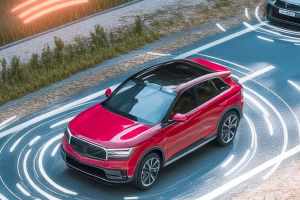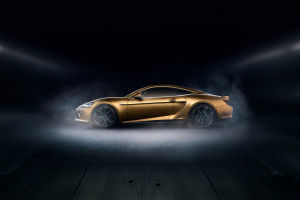
Smart connected cars have become an essential part of the development of automotive technology worldwide. Many car brands have already introduced "smart versions" of their vehicles to the market. But what exactly is a smart connected car?
Simply put, it's a vehicle equipped with advanced sensors, controllers, and actuators, which are integrated with modern communication and network technologies.
These cars can exchange and share intelligent information between the car, the driver, the road, and even the cloud (also known as V2X: Vehicle-to-Everything system). They are capable of complex environment perception, smart decision-making, and collaborative control, allowing for safer, more efficient, comfortable, and energy-saving driving. Ultimately, these cars could even operate without human intervention.
The Core of Smart Cars
Often referred to as "smart vehicles," these cars are defined by their use of advanced sensor technology and artificial intelligence to enable features like autonomous driving. According to the National Development and Reform Commission (NDRC), in 2020, smart cars are described as vehicles that use sensors and new technologies such as AI to create a new generation of cars that evolve into smart mobile spaces and application terminals. The core components of these vehicles are based on the car's sensory systems, akin to human perception organs, the brain, and limbs.
Basic Components of a Smart Connected Car
A smart connected car integrates sophisticated sensors such as cameras, LiDAR, radar, and ultrasonic sensors with controllers and actuators. These technologies enable the car to interact with its environment by gathering and sharing information with other vehicles, pedestrians, and infrastructure. The car is capable of sensing its surroundings and identifying potential hazards like obstacles, road signs, pedestrians, and other vehicles. With this information, it can automatically make decisions to ensure a safe journey, following the driver's intent to reach a destination, ultimately driving itself.
Key Systems of Smart Connected Cars
The control system of a smart connected car consists of three main components: perception, planning, and control. The perception system is responsible for recognizing traffic elements such as obstacles, road markings, traffic signals, and pedestrians. The car's location is determined through a process known as localization. The planning system helps the car decide the best route to reach its destination while avoiding obstacles and optimizing the travel path for safety and comfort. Finally, the control system ensures that the car follows the planned route accurately, sending appropriate signals to the vehicle's throttle, steering, and brakes.
High-tech Integration in Smart Cars
The smart connected car is a high-tech integration of automotive engineering, artificial intelligence, computing, microelectronics, automatic control, communication, and platform technologies. It combines environment perception, decision-making, control execution, and information exchange into one cohesive system. This integration makes it one of the most significant core technologies of future vehicles, transforming how we think about transportation.
Why Smart Connected Cars Matter
These cars are more than just an upgrade of traditional vehicles; they represent a shift towards a safer, smarter, and more connected future for mobility. With the ability to communicate with other vehicles and infrastructure, smart connected cars can reduce traffic accidents, improve road efficiency, and make driving more sustainable. The integration of AI and machine learning into driving systems also means that these cars are always learning, improving their safety and functionality with every mile traveled.
The Future of Smart Cars
As technology continues to evolve, so will the capabilities of smart connected cars. The development of autonomous driving systems is accelerating, with many vehicles already capable of partial automation. In the near future, we may see fully autonomous cars on the roads, significantly transforming our transportation system and daily lives.
Conclusion: The Road Ahead
Smart connected cars represent the future of transportation, combining the latest advancements in technology to offer us safer, more efficient, and more enjoyable driving experiences. As we continue to innovate and refine these technologies, we can expect to see even more groundbreaking developments in the automotive industry. So, Lykkers, what do you think about this new era of driving? Are you ready to embrace a smarter, more connected way to travel? Let me know your thoughts!

